
by Kendra Hughson | May 5, 2017

Family rituals and traditions, like family vacations, make lasting memories.
This will be my sixth Mother’s Day, so I am not an experienced mother by any stretch of the imagination. As a Family and Consumer Sciences Extension Agent, I am fortunate to have plenty of coursework and some practical experience in working with children– but real life is different. Here are a few of the things I have learned – from coursework and just a little bit of experience:
Every stage of childhood brings a new joy and a new challenge. Understanding child development can help parents know what to expect and how to handle challenges. Extension is a great resource for child development. We have fact sheets on all ages and stages of development. You can find them in our Electronic Data Information Source (EDIS) publications. Search them here: http://edis.ifas.ufl.edu/topic_child_development
Finding effective discipline techniques and sticking to them also is a challenge. Children need consistency. I have found that focusing on good behavior and having clear, consistent rules makes life much more peaceful. Now that my child is in school, we use a simple chart with just two or three items and use colored dots, similar to what my daughter is used to in school. This keeps it consistent and focused on the positive behaviors I want to see. My daughter is excited to earn privileges and the reward of good behavior dots or stickers. Our UF/IFAS Extension site has some great ideas for discipline too. Find them here: discipline resources.
Children need routines. I think adults do, too. Having a routine and sticking to it helps children know what to expect. Those family rituals and traditions are just as important for building family stability and a sense of belonging. They make for great family memories! Don’t forget to make time for bedtime stories, making cookies, or for family celebrations, like Mother’s Day.
I am not an expert at parenting. I have made mistakes, some big, some little. When I do need expert advice, I go back to what I have learned from my work in Extension. Extension has all the research-based information you can trust on parenting and a variety of other topics. Check it out: edis.ifas.ufl.edu.

by Laurie Osgood | May 3, 2017

Mother’s Day is Sunday, May 14, 2017, and it is a great time for us to celebrate our hard-working mothers. It is also a good time to talk to your mother about her health history. Knowing your mother’s health history may help improve your own health.
According to the Centers for Disease Control (CDC), a family health history is a record of the diseases and health conditions in your family. They advise you to collect information about your entire family, including any major medical conditions so you can provide your doctor with an accurate picture of your family’s health history and genetics.
8 IMPORTANT QUESTIONS TO ASK YOUR MOTHER:
- HOW’S YOUR HEART? According to the American Heart Association, heart disease is the number one killer of women, and the genetic risk is high. Although you probably know if your mother has had a heart attack in her lifetime, you may not know if other family members have suffered from high blood pressure or heart disease.
- HAVE YOU EVER HAD CANCER? It is important to know if your mother or anyone in her family has had a cancer diagnosis, but it is also essential to know what type of cancer, when it occurred, and what type of treatment was required for their cancer. This will help your doctor determine when to suggest certain screenings.
- DO YOU HAVE ANY HISTORY OF TYPE 2 DIABETES? Type 2 diabetes is one of the diseases that can be passed down to you from your mother. If your mother has ever been diagnosed with diabetes, that information must be included in your medical history.
- WHAT WAS YOUR PREGNANCY LIKE? Pregnancy-related conditions like gestational diabetes, pre-eclampsia, and fertility issues can be inherited.
- WHAT WAS MENOPAUSE LIKE? Daughters can expect to reach menopause around the same time as their mother did. Some of the symptoms of menopause can be difficulty sleeping and hot flashes. These symptoms can be eased with foods rich in Omega 3s, such as fish oil, walnuts, seafood, and spinach.
- HAVE YOU EXPERIENCED ANY MENTAL HEALTH DIFFICULTIES? Mental health issues can be inherited as well, so this information should be included in your family history.
- HAVE YOU EVER HAD EYE PROBLEMS? Glaucoma is a disease that may typically appear in older adults. Heredity is known to play a key role in all types of glaucoma.
- DO YOU HAVE OSTEOPOROSIS SYMPTOMS? A family history of bone density problems can indicate your own chances of developing osteoporosis or other bone difficulties as you get older.
Conversations about health can be particularly difficult between parents and children, as they are not the normal topic of conversation on Mother’s Day. However, knowing your mother’s health history can help you take better care of yourself and can be an opportunity to improve the health of the next generation in your own family.
Resource: https://www.cdc.gov/features/familyhealthhistory/index.html
by Ginny Hinton | Apr 3, 2017
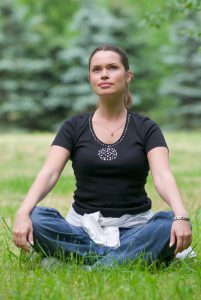
Simplify your life. What an easy thing to say! Unfortunately, sometimes putting those words into action can be anything but easy. For so many of us, things just seem to accumulate until clutter becomes a way of life. In fact, most Americans only use 20% of what we own. The other 80% consists of things we don’t use, think we ought to use or might use someday. This kind of clutter can take over a home, turning a peaceful retreat into a stressful out-of-control environment.
It’s a fact. Disorganization causes 80% of the clutter in most homes. Becoming more organized and ditching the clutter can do wonders for lowering stress and improving physical, mental and emotional health. Organization puts you in control of your environment, opens up more time for yourself and even saves you money by eliminating those unnecessary last-minute purchases.
Professional Organizer Peter Walsh offers the following “FAST” tips for getting rid of clutter:
F: Fix a time. Eliminating clutter isn’t something you need to do all by yourself. Make it a family affair and get even more done. Pick a weekend day or a couple of hours every day when everyone is home and get a jump start on the process.
A: Anything not used in 12 months. If you haven’t used something in the last year, you probably don’t need it. There are lots of strategies for narrowing down what can be thrown away versus what needs to be kept. One idea with clothes is to point all hangers in one direction. As you wear an item, turn the hanger in the opposite direction. By the end of the season, you’ll be able to tell exactly which clothes you need to bid a fond farewell.
S: Someone else’s stuff. This one is easy. Your house shouldn’t contain anything that doesn’t belong to you. If it doesn’t belong to you, don’t keep it in your house.
T: Trash. Make the trash can your hungry friend – and feed it. Be proud of how much you purge and keep your goal in sight: Only save the amount of stuff that makes sense for your space.
When it comes to “clutter busting”, put strategy into action and you’ll soar. Take advantage of online search engines to find even more tips and tricks. Before you know it, you’ll be amazed at what you’ve accomplished.
References:
Declutter Your Life, UF/IFAS Extension, Seminole County, Julie England. 2016
Getting Organized, West Virginia University Extension Service Families and Health Programs, Stephanie Nestor and Zona Hutson. 2010
Get Organized Now Website http://www.getorganizednow.com/
Peter Walsh http://www.oprah.com/home/Clutter-Control
by Amy Mullins, PhD, RDN | Apr 3, 2017
 It’s no secret that exercise is good for you and can improve your life in so many ways. The idea of exercise can be daunting for some people, especially if you’ve never done it on a regular basis. You don’t have to go to the gym and lift weights or run a half -marathon to “exercise.” It’s important to keep in mind that many different types of physical activity can be considered exercise and can get you on the path to feeling great every day.
It’s no secret that exercise is good for you and can improve your life in so many ways. The idea of exercise can be daunting for some people, especially if you’ve never done it on a regular basis. You don’t have to go to the gym and lift weights or run a half -marathon to “exercise.” It’s important to keep in mind that many different types of physical activity can be considered exercise and can get you on the path to feeling great every day.
Benefits of physical activity include:
- Increasing your chances of living longer
- Feeling better about yourself
- Decreasing your chances of becoming depressed
- Sleeping well at night
- Moving around more easily
- Having stronger muscles and bones
- Achieving and maintaining a healthy weight
- Being with friends or meeting new people
- Enjoying yourself and having fun!
Consider some new ways to become active such as:
- Volunteering within your community
- Taking group walks around the neighborhood
- Taking up gardening and growing vegetables or flowers
- Doing stretches and chair exercises throughout the day and while watching TV or on the computer.
The idea is to find FUN activities that will keep you moving, active, and engaged. If you decide to start a more rigorous exercise regimen, make sure to ask your doctor first.
Always keep proper hydration in mind, especially when exercising outdoors during the summer heat. Dehydration is a leading cause of hospitalization and serious health problems for older adults. Signs and symptoms of dehydration include headaches, constipation, muscle cramps, dry mouth, sleepiness, and rapid heart rate. It’s important to hydrate yourself with at least eight 8-oz. cups of water during the day. Stay ahead of the game and don’t wait until you’re thirsty to drink… by then, you are already dehydrated.
The National Institutes of Health, National Institutes on Aging recommend making these five tips a priority everyday:
- Try to be physically active for at least 30 minutes on most or all days of the week
- Eat plenty of fruits and vegetables
- Choose foods that are low in added sugars, saturated fats, and sodium
- Pick whole grains and lean sources of proteins and dairy products
- Practice all four types of exercise: endurance, strength, balance, and flexibility
For more information about exercise, hydration, nutrition, and safety for older adults, visit https://go4life.nia.nih.gov/.
by Heidi Copeland | Apr 3, 2017
Earth Day: an issue of sustainability!
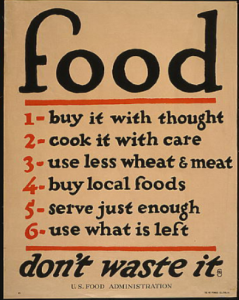 Have you ever thought about Earth Day, you know, that one day a year that falls on April 22nd?
Have you ever thought about Earth Day, you know, that one day a year that falls on April 22nd?
Earth Day was founded in 1970 by Gaylord Nelson, a U.S. Senator from Wisconsin, and sought to focus on the environment and how we can create healthy and sustainable surroundings. Almost a half-century later, the principals of Earth Day remain the same, and we continue to come up with ways to preserve, or make our environment a sustainable one.
As a consumer, what can we do to practice environmental sustainability?
We have many opportunities, Take food for instance. As a nation not only are we becoming super-sized but so is our food-related waste.
In August of 2012, the Natural Resources Defense Council (NRDC) issued a paper explaining that America Is Losing Up to 40 Percent of Its Food from Farm to Fork to Landfill. Yes, that is right; nearly 40 percent of our food supply is wasted (yet, one in eight Americans struggles to put food on the table).
The reasons for such waste are multifaceted; however, consumers are a major contributor to the problem. Key findings include:
The average American family of four ends up throwing away an equivalent of up to $2,275 annually in food.
In average American households, 2/3 of household waste is due to food spoilage:
40 percent of fresh fish
23 percent of eggs
20 percent of milk
Citrus fruits and cherries top the list for fruits, and sweet potatoes, onions, and greens are commonly wasted vegetables
Other household waste includes:
cooking too much
serving too much
over purchasing
plate waste
holiday celebrations
Wasted food also translates into wasted natural resources. It takes energy, water and farmland to grow, transport, and store food. Additionally, food waste is the single largest component of solid waste in U.S. landfills. By wasting less food, each of us can be an essential component in solving this increasing problem.
In 1917, the U.S. Food Administration distributed war effort posters in hopes of convincing the public to conserve food resources with expectations that this campaign would maintain an adequate supply of food for the troops fighting wars as well as for American households.
These century old practices are applicable today.
- Buy it with thought! We can be mindless in the way we purchase food in much the same way we can be mindless in how we eat our food. Make thoughtful purchases, as wise choices are better for both our planet and our body.
- Cook it with care. In the end, checking items we have on hand, planning menus and shopping with care makes us mindful and aware.
- Use less wheat & meat. In fact, Meatless Mondays was a sustainable war effort too! Practicing this use less effort provokes mindful eating of resource intense products.
- Buy local. Hardly a buzzword, the idea has been around for a long time. By mindfully purchasing local products, we are not stuffing items into our grocery carts without reflection on where the food comes from.
- Serve just enough. Choose My Plate, https://www.choosemyplate.gov/MyPlate gives a great visual representation of the foods each of us need on our plate. Not only can serving enough help our wallet, but it can help our waistline!
- Use what is left. Using what we have is a wise use of resources for both Mother Nature, personal finances and our health. Try eating your leftovers instead of throwing them into the landfill.
Norman Vincent Peale says, Change your thoughts and you change your world. Can the same thinking apply to our behavior? If each and every one of us made a small behavior change it could help change the world and make us better stewards of our environment, not just on April 22nd, but every day.
FOR MORE INFORMATION:
https://www.nrdc.org/issues/food-waste
http://www.nrdc.org/living/eatingwell/saving-leftovers-saves-money-resources.asp
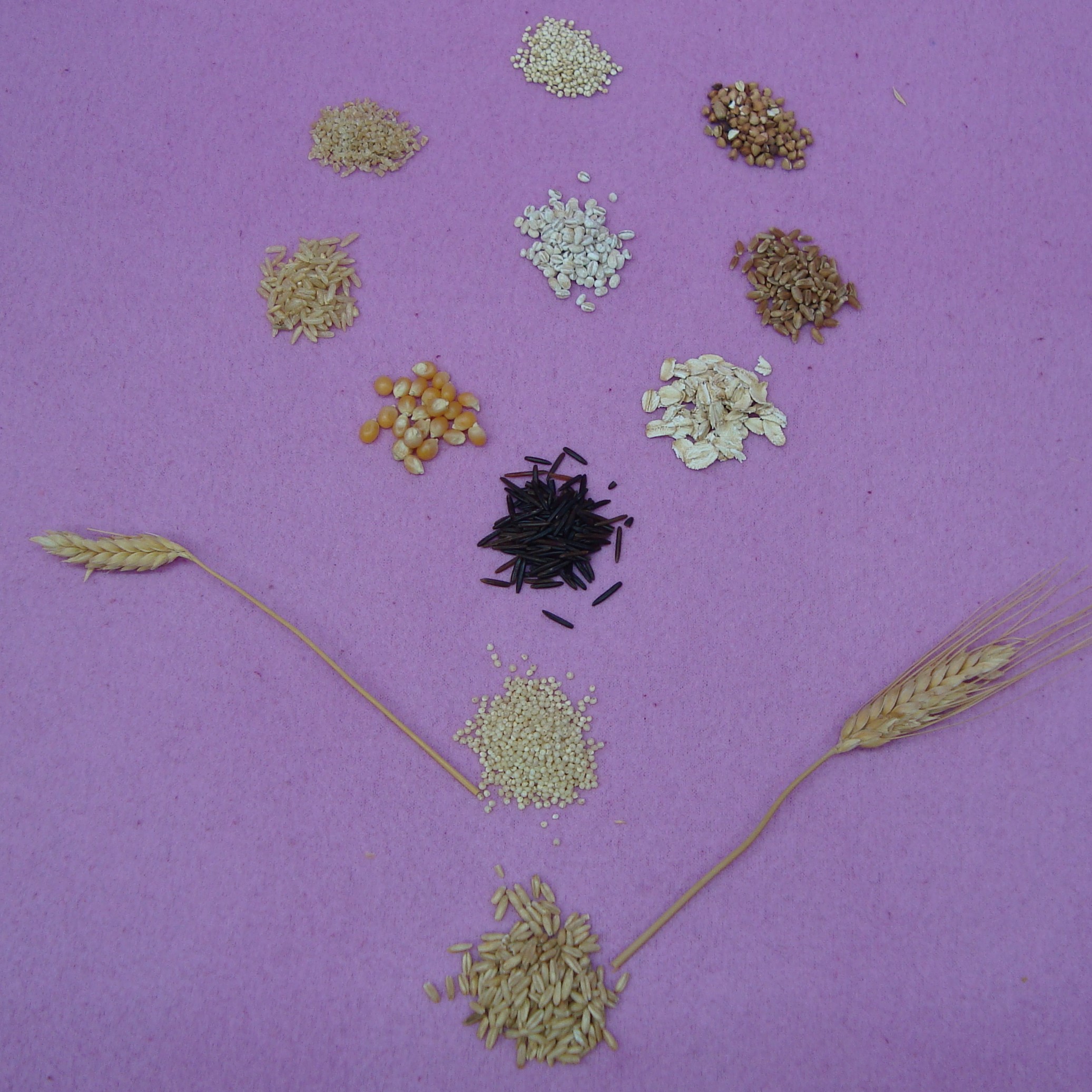
by Angela Hinkle | Apr 2, 2017
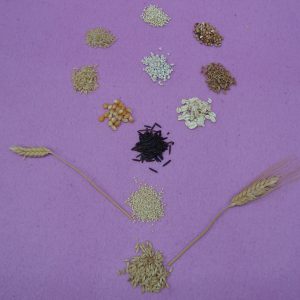 Wedding showers, baby showers, graduation parties – let’s face it, about half the celebration is based on the food that is served. Trays and plates of tasty morsels include a variety of colors, textures, sizes, and tastes. Why not include some healthy, whole grain options to join in on the fun?
Wedding showers, baby showers, graduation parties – let’s face it, about half the celebration is based on the food that is served. Trays and plates of tasty morsels include a variety of colors, textures, sizes, and tastes. Why not include some healthy, whole grain options to join in on the fun?
Whole grain foods contain the whole edible part of the plant – the bran, endosperm, and germ. Consuming whole grains offers many health benefits like reducing risk of heart disease, type 2 diabetes, and some cancers. Look for 100% whole grain on a package or “whole” as the first item in the ingredient list. Think of whole grain party foods as an extra “present” to give new moms, graduates, and engaged couples a healthy boost.
Try serving whole grain crackers topped with your favorite cheese and herb, whole grain pancakes or French toast with fruit, oatmeal cookies, ham and grainy mustard on mini whole grain rolls, finger sandwiches on whole grain bread cut into festive shapes, or popcorn (a whole grain) with a dash of chili powder, cumin, and garlic. Click kingarthurflour for even more whole grain party ideas.
Here’s a light spring side salad with a whole grain sure to please guests at your next shower.
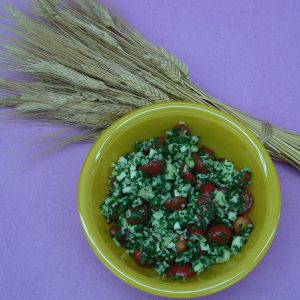
Spring Grain Salad
1 Cup cooked brown or wild rice or whole grain barley, bulgur, couscous, or other grain
6 Cups spinach or kale, stems removed
1/4 Teaspoon each salt and pepper
1/4 Cup fresh mint leaves
1/3 Cup lemon juice
1/4 Cup olive oil
1 Garlic clove, finely chopped
1 Pint grape or cherry tomatoes, halved
1/2 Chopped cucumber (preferably seedless)
3/4 Cup mozzarella cheese, small dice (optional)
- In a food processor, combine the spinach and mint and process until finely chopped, scraping down sides of the bowl, if necessary.
- In a large bowl, whisk together the lemon juice, oil, garlic, salt, and pepper. Add the whole grain of choice, spinach mixture, tomatoes, cucumber, and cheese. Toss to combine.
To incorporate whole grains into your shower days and every day, go to MakeHalfYourGrainsWhole.
And the next time you get the whole gang together, go whole grain!










